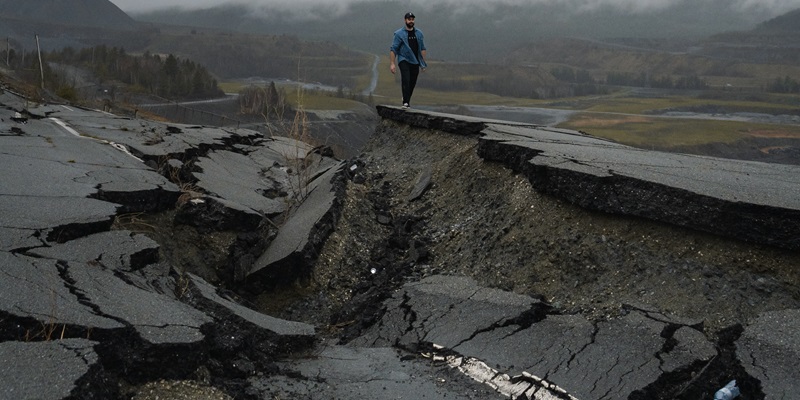In an era marked by technological advancements and the increasing threat of natural disasters, the need for efficient and effective earthquake early warning systems has become paramount. With the integration of artificial intelligence (AI) in robotic systems, these warning systems have become even more powerful, providing accurate and timely alerts to mitigate the potential devastation caused by seismic events.
Utilizing Machine Learning Algorithms for Data Analysis
By harnessing the capabilities of machine learning algorithms, AI-powered robotic earthquake early warning systems can analyze vast amounts of seismic data. This allows for more accurate predictions regarding the occurrence and impact of earthquakes. As these systems process and interpret data in real-time, they continuously learn and improve their predictive abilities.
Improved Prediction Accuracy through Iterative Learning Process
One of the notable advantages of AI integration is the ability of robotic systems to adapt to changing seismic patterns. Through an iterative learning process, these systems continuously update their algorithms and models, enhancing their ability to predict earthquakes with greater precision. As a result, the reliability of earthquake early warning systems is significantly improved.
AI enables real-time analysis of seismic data, leading to faster and more precise earthquake detection. With the ability to process enormous amounts of data in seconds, AI-powered robotic systems can swiftly identify seismic waves and distinguish them from background noise. This capability allows for a swift response and timely alerts, ensuring the protection of lives and infrastructure.
Identification of Seismic Wave Characteristics and Noise Elimination
Through the use of pattern recognition algorithms, AI-powered robotic systems can identify the unique characteristics of seismic waves. By distinguishing these waves from ambient noise, the accuracy and reliability of earthquake detection are significantly enhanced. This capability eliminates the risk of false alarms, ensuring that warnings are triggered only when necessary.
Enhanced Detection and Differentiation of Seismic Events
In addition to detecting earthquakes, AI-powered robotic systems excel at accurately predicting the intensity and duration of seismic events. By analyzing historical data and correlating it with real-time information, these systems can estimate the potential impact of an earthquake on a specific area. This level of precision empowers emergency response teams and authorities to make informed decisions about evacuation measures and resource allocation.
Automated Alert Generation and Real-Time Notifications
AI can optimize the communication capabilities of robotic earthquake early warning systems. By generating automated alerts and notifications in real time, these systems can promptly relay crucial information to individuals, communities, and relevant authorities. This feature ensures that people receive timely warnings and instructions, maximizing their chances of taking prompt and appropriate action.
Improved Communication Capabilities
The integration of AI in robotic systems enhances communication by enabling seamless integration with other monitoring and response mechanisms. This means that early warning systems can provide input to emergency management centers, enabling comprehensive and coordinated disaster response. Additionally, it facilitates better coordination among different warning systems, such as tsunami alerts, to provide a more holistic picture of potential risks.
Possibilities Opened with AI Integration in Robotic Systems
The integration of AI in robotic earthquake early warning systems opens up new possibilities for remote monitoring and control. By utilizing advanced technologies, these systems can be remotely operated, eliminating the need for on-site personnel and providing a significant advantage in remote or hard-to-reach areas. Remote access and control enhance the efficiency and effectiveness of response efforts, ensuring a rapid and coordinated reaction to seismic events.
Role of Human Decision-Making in Conjunction With AI-Powered Systems
While AI-powered robotic systems have demonstrated tremendous capabilities, it is crucial to emphasize the continued importance of human intervention and decision-making. Human expertise and knowledge play a significant role in interpreting and validating the insights and warnings generated by these systems. By combining the power of AI with human judgment, the accuracy and effectiveness of early warning systems can be further enhanced.
The integration of AI in robotic earthquake early warning systems has revolutionized the efficiency and effectiveness of these vital systems. With the ability to analyze vast amounts of data, make accurate predictions, distinguish seismic patterns, and estimate impact, these systems have become instrumental in safeguarding lives and minimizing the destruction caused by seismic events. By augmenting communication capabilities and enabling remote monitoring, AI empowers authorities and communities to respond promptly and effectively. However, it is important to remember that AI is a tool that complements human expertise and decision-making. The collaboration between AI-powered robotic systems and human intervention ensures the most reliable and proactive approach to earthquake early warning and response.

